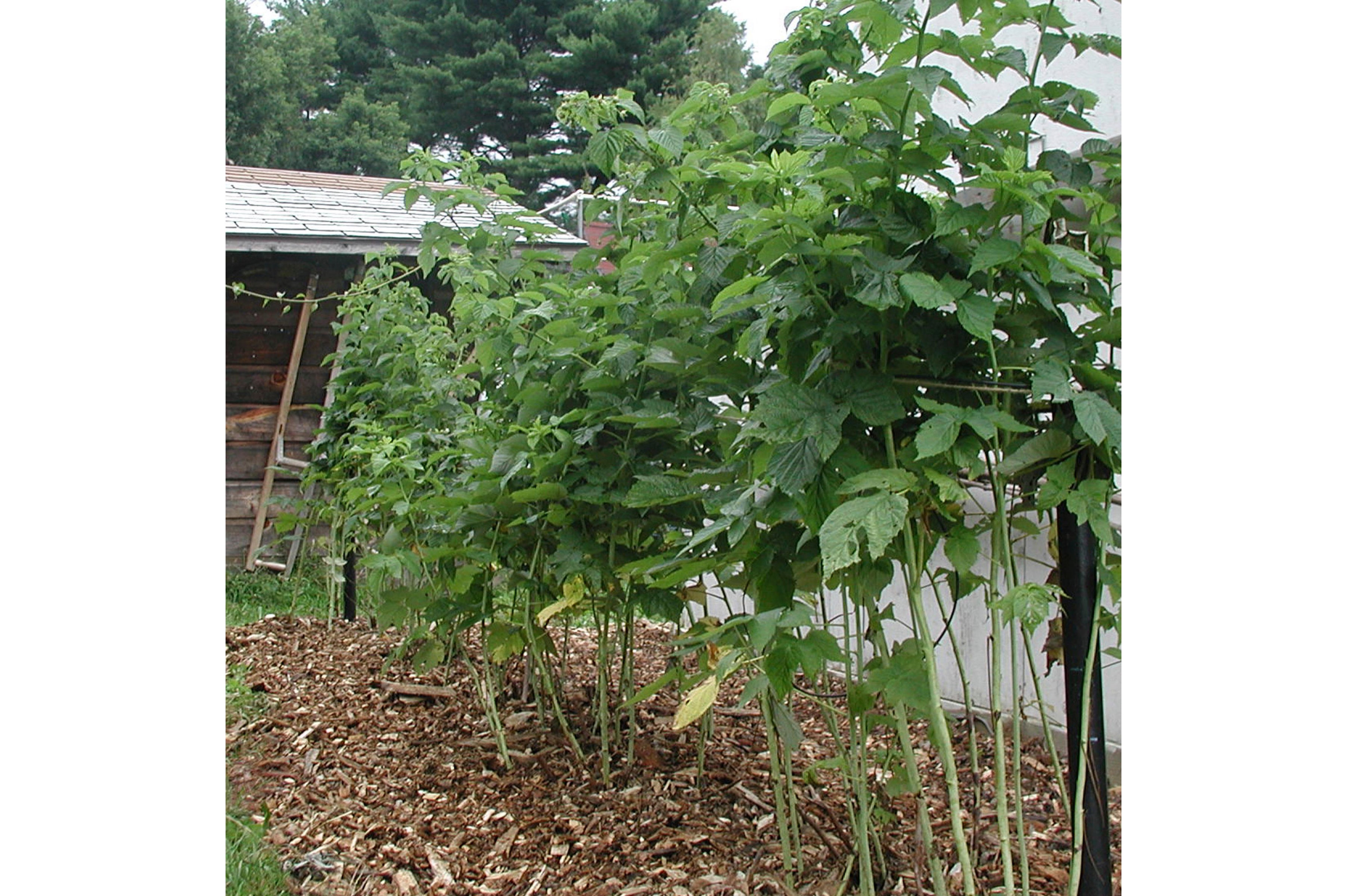Bramble patch? Berries grow better in pruned rows or hills
Does the term “bramble patch” evoke something romantic and nostalgic to you

I wince every time someone tells me about their “bramble patch.” For some, those two words might evoke nostalgic, pastoral notions. For me, they call to mind thrashing through a mess of thorny canes to get at not-very-many berries.
I prefer my brambles — raspberries and blackberries — easily accessible on healthy plants that bear loads of berries. That means training them and pruning them regularly. That way, all stems bask in sunlight and air, limiting disease problems and yielding the tastiest fruit.
My brambles unromantically offer me their fruits from plants growing in a “hedgerow,” which is a neat, 1-foot-wide row; or in “hills,” clumps or groupings (not mounds) of plants 5 feet apart in each direction.
A good time for major pruning is while the plants are still dormant or just awakening, but doing some pruning now leaves less to do later and makes for even healthier plants.
HOW DO THEY GROW?
Before grabbing your pruning shears, it helps to know something about how brambles grow and and bear fruit.
Bramble roots are perennial, living year after year, but their individual canes live for only two seasons. A cane grows one season, fruits the next and then dies. Once a planting is established, there is a continuous supply of 1- and 2-year old canes, so you get to harvest berries every year.
Anyone who grows brambles soon realizes that plants try to spread beyond their allotted space. Shoots of red and yellow raspberries pop up through the ground from the ends of their wandering roots. Black raspberries, purple raspberries, and blackberries hopscotch along as their canes arch down to the ground and take root at their tips, forming new plants.
Pruning is aimed at keeping brambles productive and contained.
PRUNING SUMMER-BEARING RED RASPBERRIES
The actual pruning is easy if you keep all that in mind. Three steps are involved in pruning summer-bearing red or yellow raspberries.
1. Cut right to the ground any canes that have borne fruit, either now, after the canes finish fruiting in summer, or during winter. Remember, these canes will die anyway. You can recognize them by their old, cracking bark and, well, they look dead or dying. Cutting them out now allows remaining canes to get plenty of sunlight and better air circulation.
2. Next, cut down any new canes that look spindly or diseased, or are overcrowded. When you return to your planting in winter, continue this step, more aggressively, removing canes trying to escape the foot-wide hedgerow or their hill. Also, further reduce the number of canes in the row or at the hill to the healthiest-looking ones, 6 inches apart in hedgerows, or six canes per hill.
3. Finally, shorten the remaining canes. This keeps them from flopping around too much. Four or 5 feet is a good height, though if the canes are held up by a wire strung between posts along the row, or to a post at each hill, they can be left longer and will bear more fruit.
PRUNING THE OTHER BRAMBLES
Black raspberries, purple raspberries, and blackberries bear their fruits on branches that grow off the canes, so two additional pruning steps are necessary.
First, pinch off the tips of any growing (new) canes during the summer when they reach 3 to 4 feet in height, to induce them to branch. Then, during winter, shorten each branch to 2 feet long.
Also, remove old canes that have already fruited and reduce the number of young canes, just as for the red and yellow raspberries. As with the raspberries, ideally do this now. You could also do it in winter.
Tie shoots of blackberries and purple and black raspberries to posts or wires to keep their tips from arching to the ground and rooting.
One other possible wrinkle in pruning brambles arises if you grow the everbearing (also known as fallbearing) type of red or yellow raspberries. Everbearing raspberries grow just like conventional red and yellow raspberries, except they begin to form fruit at the tops of new canes in late summer of their first season of growth. The canes finish fruiting further down along these same canes in early or midsummer of the following year.
Everbearers aren’t really everbearing. They bear their midsummer crop on 2-year-old canes and their fall crop on 1-year-old canes.
Prune everbearers just as you would conventional red and yellow raspberries, except shorten the 1-year-old canes that you save to just below where they fruited the previous fall. Remnants of old fruit stalks or unharvested fruit will be evident.
There is an even easier way to prune everbearing raspberries. Simply mow the whole patch — whoops! I mean planting — to the ground each year. This sacrifices the early or midsummer crop, but you do get to harvest a late summer crop.
—-
Lee Reich writes regularly about gardening for The Associated Press. He has authored a number of books, including “Weedless Gardening” and “The Pruning Book.” He blogs at http://www.leereich.com/blog. He can be reached at garden@leereich.com.
Subscribe to Independent Premium to bookmark this article
Want to bookmark your favourite articles and stories to read or reference later? Start your Independent Premium subscription today.
